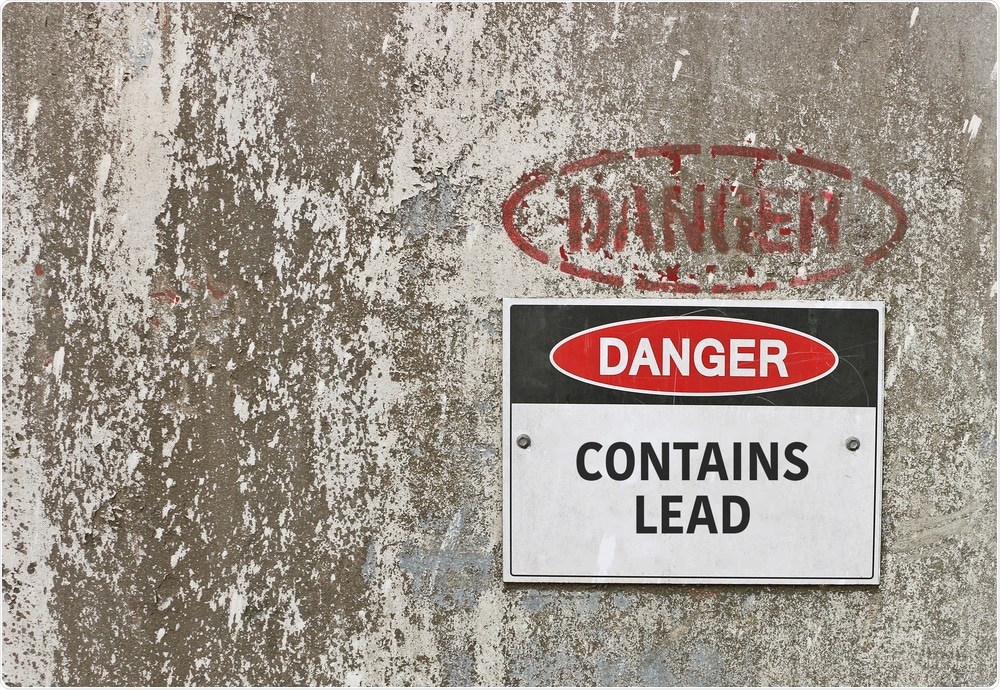A research team from Brazil and Portugal has identified a link between a microRNA (miRNA) and the presence of lead in an organism. This relationship could be linked to mechanisms that control DNA methylation—a physiological process needed to regulate the expression of genes and make sure that genes work properly.

Lead. Image Credit: Kim Britten/Shutterstock.com
The researchers detected the changes in blood cells from staff working in automotive battery plants, in which lead is used as a raw material. Intriguingly, lead concentrations in blood samples collected from 85 volunteers—averaging 20 μg/dl—were found to be lower than the acceptable threshold of 60 μg/dl defined in Brazilian law.
The new study was funded by São Paulo Research Foundation (FAPESP) and was recently described in an article published in the Frontiers in Genetics journal.
The authors of the study are affiliated with the Federal University of São Paulo (UNIFESP), the Federal University of the ABC (UFABC), Anhembi Morumbi University, and the University of São Paulo (USP) based in Brazil, as well as the New University of Lisbon (UNL) located in Portugal. The research work was part of a project financially supported by FAPESP.
What all the studies conducted to date suggest, albeit incipiently, is that low-level exposure to lead isn’t necessarily associated with a lack of adverse effects but may correlate with molecular events that precede the events that are well-established in the literature as deriving from chronic lead poisoning, such as neurological and hematological problems.”
Gustavo Rafael Mazzaron Barcelos, Study Last Author and Professor, Institute of Health and Society, Federal University of São Paulo
The Institute of Health and Society (ISS) is based in Santos, São Paulo state.
Barcelos added that while low doses did not directly correlate with health concerns, the DNA changes should still act as a warning.
These levels cannot be considered safe. It would be great if lead exposure levels could be minimal, but a whole industrial system depends on production of lead. We need good public policy to minimize exposure, which we’ve been observing systematically in Brazil for decades.”
Gustavo Rafael Mazzaron Barcelos, Study Last Author and Professor, Institute of Health and Society, Federal University of São Paulo
In Brazil, any exposure to lead surpassing 60 μg/dl should be reported to the social security authorities and the national health service—SUS. In China, a study has demonstrated that higher blood lead levels, averaging about 40 μg/dl, were detected in local workers.
We analyzed DNA methylation, one of the epigenetic changes that occur mainly in promoter regions, which control gene functions. When methylation in these regions undergoes such changes, protein synthesis may become dysregulated, potentially causing problems. There’s evidence that lead exposure can inhibit DMNT1, the enzyme responsible for controlling DNA methylation.”
Marilia Ladeira de Araújo, Study First Author, Federal University of São Paulo
de Araújo continued, “In the samples we analyzed, we found an abundance of miR-148a, a miRNA that targets the gene for DMNT1.”
The new study was part of de Araújo’s PhD research work performed at ISS-UNIFESP. She carried out part of this project while working as a research intern at the Medical School of UNL with a scholarship from FAPESP.
Detection
In an earlier analysis, the team had detected an overall reduction in DNA methylation in the same group of workers, by using specimens collected from plants in the Paraná state.
The study, reported in the Journal of Toxicology and Environmental Health, Part A, was part of the master’s research work of Paula Pícoli Devóz from the University of São Paulo’s Ribeirão Preto School of Pharmaceutical Sciences (FCFRP-USP). The newly published study was also co-authored by Devóz.
The investigators subsequently decided to search for biomarkers of decreased DNA methylation, detecting many miRNAs that could be linked to this event. The team noted a considerable increase in miR-148a, which was described in the literature as being linked to oxidative stress, inflammatory processes, and DNA damage—all of which may correspond to the development of multifactor pathologies, like cancer and neurodegenerative diseases, for instance.
According to Barcelos, “The advantage of using miR-148a as a biomarker of epigenetic disturbances induced by lead exposure is that these alterations in its expression may precede various cellular disorders, such as oxidative stress and cell death.”
“We don’t yet know whether a decrease in DNA methylation has adverse effects. We analyzed the overall status of this parameter in DNA as a whole, but we now know it’s a potential biomarker of this condition,” he added.
Once the ongoing pandemic is over, Barcelos intends to continue the analysis by taking additional samples from the same group of workers over a comparatively long period to find out if the effects of low-level exposure continue to persist and how the organism would get used to it.
Source:
Journal reference:
de Araújo, M. L., et al. (2021) Association between miR-148a and DNA methylation profile in individuals exposed to lead (Pb). Frontiers in Genetics. doi.org/10.3389/fgene.2021.620744.